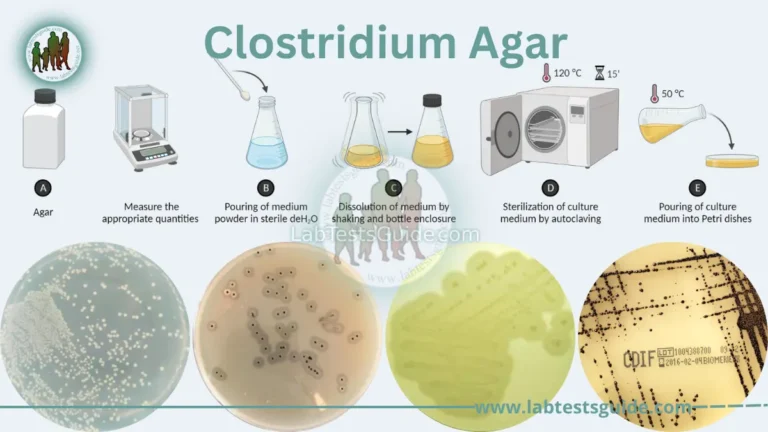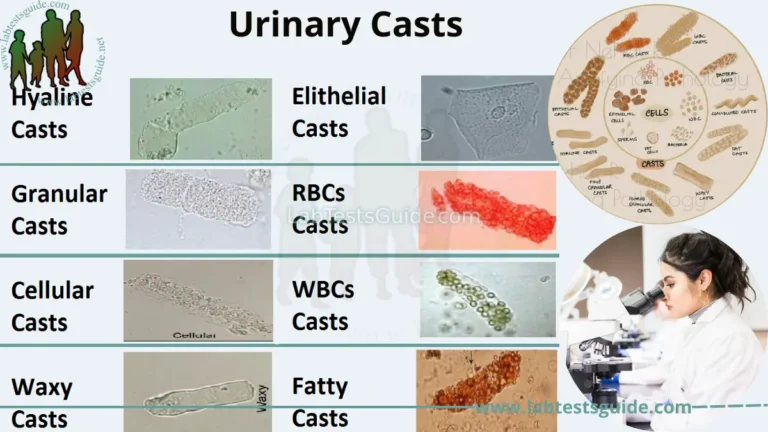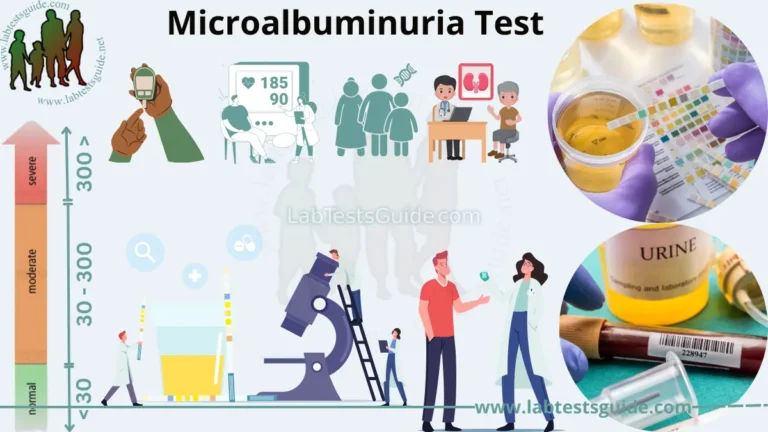Differences | Similarities | Definations | FAQs
Gram Positive VS Gram Negative Bacteria: Gram-positive bacteria are surrounded by a single thick peptidoglycan cell wall and are therefore called monoderms. Gram-negative bacteria have a much thinner peptidoglycan cell wall, but in addition they have an outer membrane containing lipopolysaccharide that surrounds the cell and are therefore called diderms.
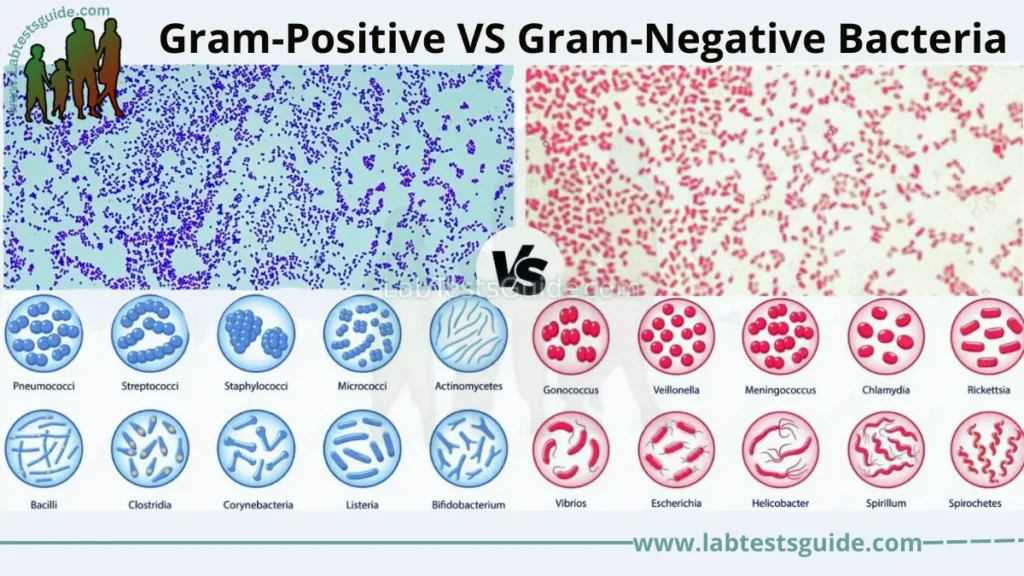
Gram Positive Bacteria Defination

Gram-positive bacteria are the genus of bacteria family and a member of the phylum Firmicutes. These bacteria retain the colour of the crystal violet stain which is used during gram staining. These bacteria give a positive result in the Gram stain test by appearing purple coloured when examined under a microscope, hence named, gram-positive bacteria. Actinomyces, Clostridium, Mycobacterium, streptococci, staphylococci, and Nocardia are a few examples of gram-positive bacteria. Read More
Gram Negative Bacteria Defination
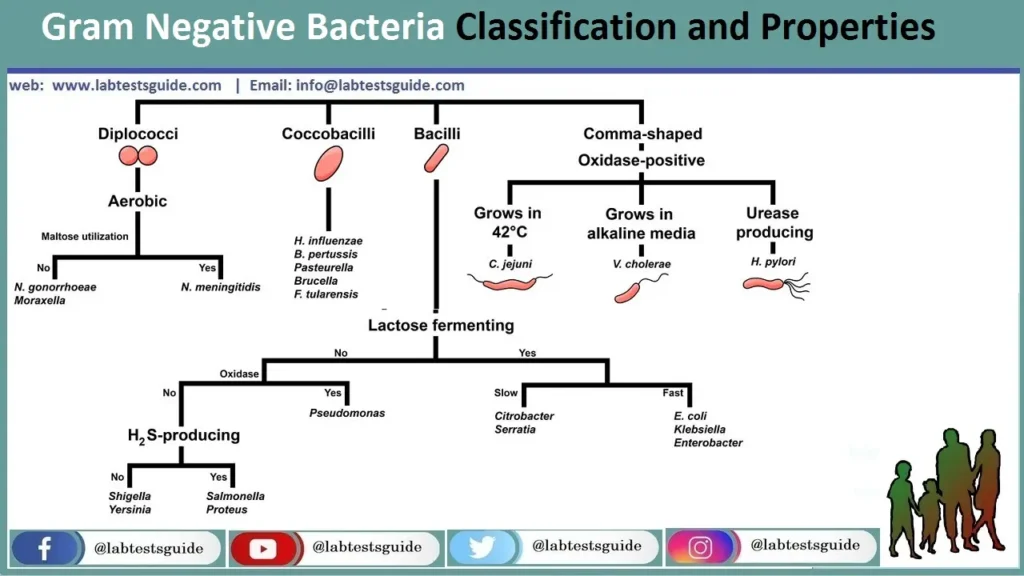
Gram-negative bacteria are bacteria that do not retain the crystal violet stain used in the gram-staining method of bacterial differentiation. They are characterized by their cell envelopes, which are composed of a thin peptidoglycan cell wall sandwiched between an inner cytoplasmic cell membrane and a bacterial outer membrane. Read More
Gram Positive VS Gram Negative Bacteria – Key Points
- The cell wall of gram-positive bacteria is composed of thick layers peptidoglycan.
- The cell wall of gram-negative bacteria is composed of thin layers of peptidoglycan.
- In the gram staining procedure, gram-positive cells retain the purple coloured stain.
- In the gram staining procedure, gram-negative cells do not retain the purple coloured stain.
- Gram-positive bacteria produce exotoxins.
- Gram-negative bacteria produce endotoxins
Gram Positive VS Gram Negative Bacteria

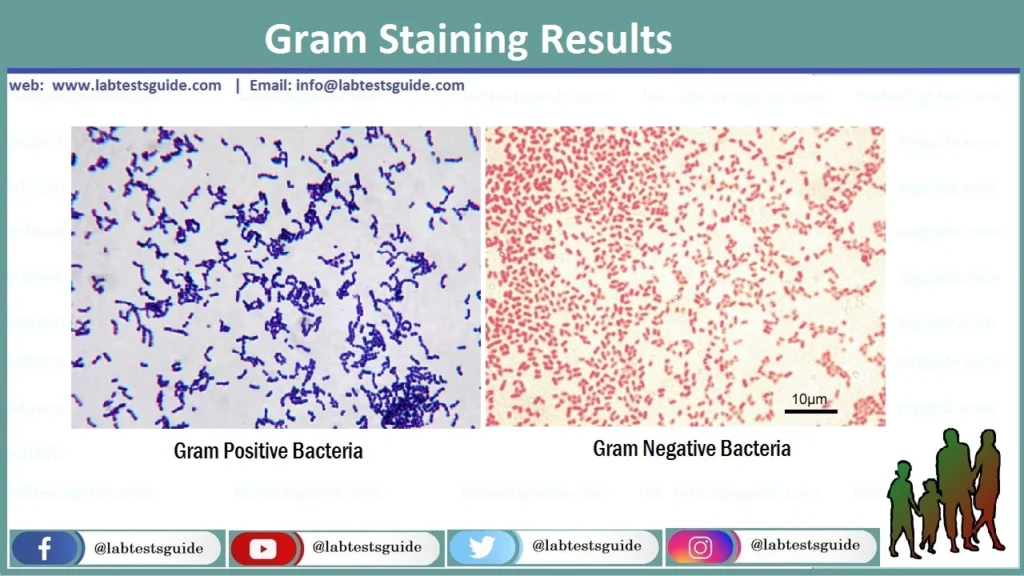
Gram-positive and gram-negative bacteria are two major groups of bacteria differentiated by their cell wall structure and staining properties. Here are 32 differences between gram-positive and gram-negative bacteria:
- Cell wall: Gram-positive bacteria have a thick cell wall composed of peptidoglycan and teichoic acid, while gram-negative bacteria have a thinner cell wall with an outer membrane and a thin layer of peptidoglycan.
- Peptidoglycan layer: The peptidoglycan layer in gram-positive bacteria is much thicker than in gram-negative bacteria.
- Outer membrane: Gram-negative bacteria have an outer membrane, which is absent in gram-positive bacteria.
- Lipopolysaccharides: The outer membrane of gram-negative bacteria contains lipopolysaccharides (LPS), which are absent in gram-positive bacteria.
- Lipoteichoic acid: Gram-positive bacteria have lipoteichoic acid, which is absent in gram-negative bacteria.
- Periplasmic space: The periplasmic space between the inner and outer membranes is more prominent in gram-negative bacteria.
- Staining: Gram-positive bacteria stain purple or blue, while gram-negative bacteria stain pink or red.
- Gram staining reaction: Gram-positive bacteria retain the crystal violet stain, while gram-negative bacteria lose the crystal violet stain and take up the counterstain.
- Gram-positive cell wall thickness: The cell wall of gram-positive bacteria is 20-80 nanometers thick.
- Gram-negative cell wall thickness: The cell wall of gram-negative bacteria is 8-12 nanometers thick.
- Gram-positive bacteria shape: Gram-positive bacteria are usually spherical or rod-shaped.
- Gram-negative bacteria shape: Gram-negative bacteria are usually rod-shaped or spiral-shaped.
- Flagella: Gram-negative bacteria usually have more flagella than gram-positive bacteria.
- Endotoxin: Gram-negative bacteria produce endotoxin, which is absent in gram-positive bacteria.
- Exotoxin: Both gram-positive and gram-negative bacteria can produce exotoxin.
- Antibiotic resistance: Gram-negative bacteria are more resistant to antibiotics than gram-positive bacteria.
- Penicillin sensitivity: Gram-positive bacteria are sensitive to penicillin, while gram-negative bacteria are not.
- Vancomycin sensitivity: Gram-positive bacteria are sensitive to vancomycin, while some gram-negative bacteria are resistant.
- Cell membrane composition: The cell membrane of gram-negative bacteria contains lipoproteins, lipopolysaccharides, and phospholipids, while the cell membrane of gram-positive bacteria contains only phospholipids.
- Porin channels: Gram-negative bacteria have porin channels in their outer membrane, which allow the passage of small molecules.
- Periplasmic enzymes: Gram-negative bacteria have more periplasmic enzymes than gram-positive bacteria.
- Acid-fast staining: Gram-negative bacteria do not show acid-fast staining, while some gram-positive bacteria do.
- Capsule formation: Gram-negative bacteria have a thinner capsule than gram-positive bacteria.
- Membrane-bound organelles: Gram-negative bacteria have membrane-bound organelles like mitochondria, while gram-positive bacteria do not.
- Cytoplasmic membrane: The cytoplasmic membrane of gram-negative bacteria is more complex than that of gram-positive bacteria.
- Proteins in the cell wall: Gram-positive bacteria have more proteins in their cell wall than gram-negative bacteria.
- Peptidoglycan cross-linking: Gram-positive bacteria have more peptidoglycan cross-linking than gram-negative bacteria.
- Phospholipid asymmetry: Gram-negative bacteria have asymmetric distribution of phospholipids in their cell membrane.
Table of Differences:
| Character | Gram-Positive Bacteria | Gram-Negative Bacteria |
|---|---|---|
| Gram Reaction |  Retain crystal violet dye and stain blue or purple on Gram’s staining. Retain crystal violet dye and stain blue or purple on Gram’s staining. |  Accept safranin afterdecolorization and stain pink or red on Gram’s staining. Accept safranin afterdecolorization and stain pink or red on Gram’s staining. |
| Cell wall thickness | Thick (20-30 nm) | Thin (8-10 nm) |
| Peptidoglycan Layer | Thick (multilayered) | Thin (single-layered) |
| Rigidity and Elasticity | Rigid and less elastic | Less rigid and more elastic |
| Outer Membrane | Absent | Present |
| Variety of amino acid in cell wall | Few | Several |
| Aromatic and Sulfur-containing amino acid in cell wall | Absent | Present |
| Periplasmic Space | Absent | Present |
| Teichoic Acids | Mostly present | Absent |
| Porins | Absent | Present |
| Lipopolysaccharide (LPS) Content | Virtually None | High |
| Lipid and Lipoprotein Content | Low (acid-fast bacteria have lipids linked to peptidoglycan) | High (because of presence of outer membrane |
| Ratio of RNA:DNA | 8:1 | Almost 1 |
| Mesosomes | Quite Prominent | Less Prominent |
| Flagellar Structure | 2 rings in basal body | 4 rings in basal body |
| Magnetosomes | Usually absent. | Sometimes present. |
| Morphology | Usually cocci or spore forming rods (exception : Lactobacillus and Corynebacterium) | Usually non-spore forming rods (Exception : Neisseria) |
| Endospore formation | Some produce endospores during unfavorable conditions. | Usually not found to produce endospores. |
| Toxin Produced | Exotoxins | Endotoxins or Exotoxins |
| Pathogens | Few pathogenic bacteria belong to Gram positive group. | Most pathogens are Gram negative. |
| Nutritional Requirements | Relatively Complex | Relatively Simple |
| Resistance to Physical Disruption | High | Low |
| Cell Wall Disruption by Lysozyme | High | Low (requires pretreatment to destabilize outer membrane) |
| Susceptibility to Penicillin and Sulfonamide | High | Low |
| Susceptibility to Streptomycin, Chloramphenicol and Tetracycline | Low | High |
| Inhibition by Basic Dyes | High | Low |
| Susceptibility to Anionic Detergents | High | Low |
| Resistance to Sodium Azide | High | Low |
| Resistance to Drying | High | Low |
| Rendering | They can rendered Gram -ve by increasing acidity | They can rendered Gram +ve by increasing alkalinity |
| Examples | Staphylococcus aureus Staphylococcus epidermidis Staphylococcus saprophyticus Streptococcus pneumoniae Streptococcus pyogenes Streptococcus agalactiae Enterococci Corynebacterium diphtheriae Bacillus anthracis Clostridium | Salmonella Klebsiella Proteus Helicobacter Pseudomonas Escherichia coli Bartonella henselae Campylobacter Legionella Salmonella typhi Vibrio cholerae |
Similarities of Gram Positive VS Gram Negative Bacteria:
While there are many differences between gram-negative and gram-positive bacteria, there are also some similarities:
- Both gram-negative and gram-positive bacteria are single-celled organisms that lack a nucleus and other membrane-bound organelles.
- Both types of bacteria reproduce asexually through binary fission.
- Both gram-negative and gram-positive bacteria have a cytoplasmic membrane that serves as a selective barrier and regulates the flow of materials in and out of the cell.
- Both types of bacteria have ribosomes for protein synthesis.
- Both gram-negative and gram-positive bacteria can have various shapes such as cocci, bacilli, and spirals.
- Both types of bacteria can cause diseases and infections in humans and animals.
- Both gram-negative and gram-positive bacteria can form biofilms, which are communities of bacteria that attach to surfaces and can cause infections.
- Both types of bacteria can have pili or fimbriae, which are protein structures that help the bacteria attach to surfaces or other cells.
- Both gram-negative and gram-positive bacteria can have flagella for motility.
- Both types of bacteria can produce enzymes and metabolites that are useful for various purposes, such as breaking down nutrients or producing antibiotics.
Table of Similarities:
Here is a table summarizing the similarities between gram-negative and gram-positive bacteria:
| Feature | Gram-Negative Bacteria | Gram-Positive Bacteria |
|---|---|---|
| Cellularity | Single-celled organisms | Single-celled organisms |
| Reproduction | Asexual binary fission | Asexual binary fission |
| Cytoplasmic membrane | Selective barrier, regulates flow of materials | Selective barrier, regulates flow of materials |
| Ribosomes | Present | Present |
| Shapes | Cocci, bacilli, spirals | Cocci, bacilli, spirals |
| Pathogenicity | Can cause diseases and infections | Can cause diseases and infections |
| Biofilm formation | Can form biofilms | Can form biofilms |
| Pili or fimbriae | Can have protein structures for attachment | Can have protein structures for attachment |
| Flagella | Can have flagella for motility | Can have flagella for motility |
| Enzymes and metabolites | Can produce various useful enzymes and metabolites | Can produce various useful enzymes and metabolites |
Frequently Asked Questions (FAQ’s)
Give some examples of gram-positive bacteria.
Gram-positive bacteria include bacteria of the genus Staphylococcus, Streptococcus, Enterococcus. These bacteria are the most common cause of clinical infections.
What is more harmful, gram-positive bacteria or gram-negative bacteria?
Gram-negative bacteria are more harmful and cause certain diseases. Its outer membranes are hidden by a slime layer that hides the antigens present in the cell.
Is it easier to kill gram-positive bacteria?
The cell wall of gram-positive bacteria absorbs antibiotics and cleaning products. Due to the peptidoglycan outer layer, they are easier to kill. Gram-negative bacteria cannot be easily killed.
What infections are caused by gram-positive bacteria?
Gram-positive bacteria often cause urinary tract infections. These are commonly caused in people who are more prone to urinary tract infections or are elderly or pregnant.
What infections are caused by gram-negative bacteria?
Gram-negative bacteria cause various infections in humans, such as indigestion, food poisoning, pneumonia, meningitis, and other bacterial infections in blood cells, bloodstream, wound infections, etc. Infections are caused by Acinetobacter, Pseudomonas aeruginosa, and E.coli.
References:
- Madigan MT, Martinko JM, Bender KS, Buckley DH, Stahl DA. Brock Biology of Microorganisms. 15th edition. Pearson; 2018. (https://www.pearson.com/us/higher-education/product/Madigan-Brock-Biology-of-Microorganisms-15th-Edition/9780134261928.html)
- Tille PM. Bailey and Scott’s Diagnostic Microbiology. 14th edition. Elsevier; 2016. (https://www.elsevier.com/books/bailey-and-scotts-diagnostic-microbiology/tille/978-0-323-35844-2)
- Tortora GJ, Funke BR, Case CL. Microbiology: An Introduction. 13th edition. Pearson; 2019. (https://www.pearson.com/us/higher-education/program/Tortora-Microbiology-An-Introduction-13th-Edition/PGM2267994.html)
- American Society for Microbiology. Gram-Positive and Gram-Negative Bacteria. (https://www.asm.org/Articles/2017/June/Gram-Positive-and-Gram-Negative-Bacteria)
- Centers for Disease Control and Prevention. Identification of Gram-Negative Bacteria. (https://www.cdc.gov/microbiology/ laboratory/gram-negative-bacteria.html)
- World Health Organization. Laboratory Biosafety Manual. 3rd edition. WHO; 2004. (https://www.who.int/publications/i/item/WHO-CDS-CSR-LYO-2004.11)
Possible References Used


